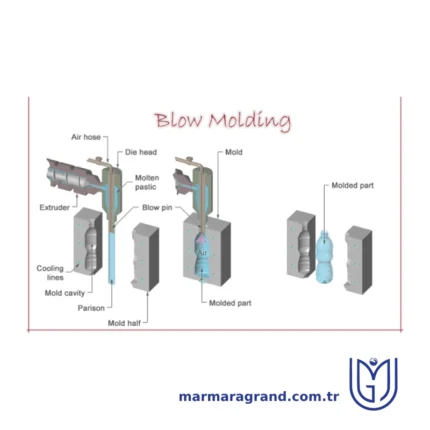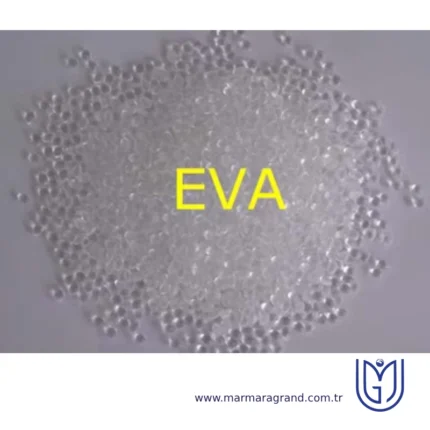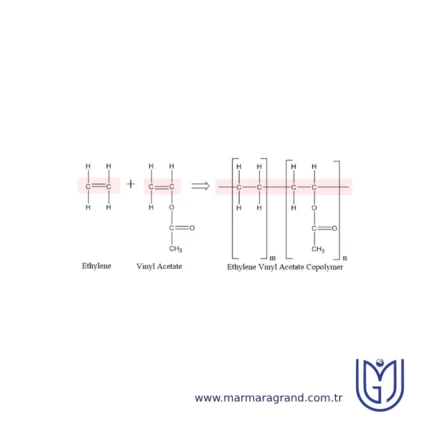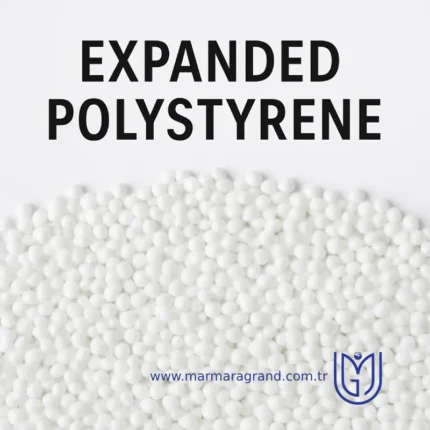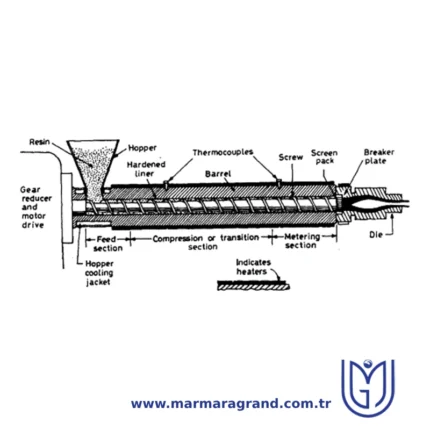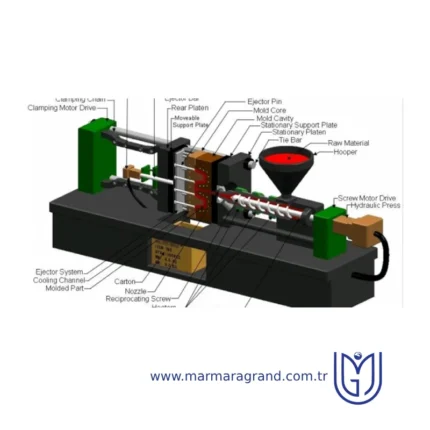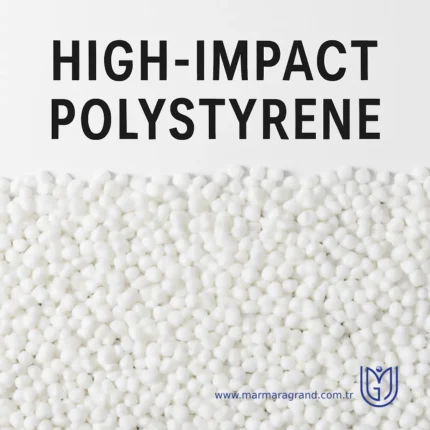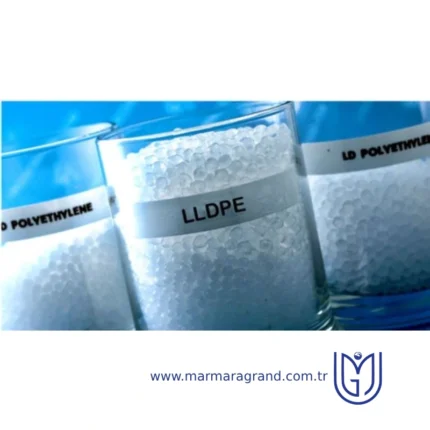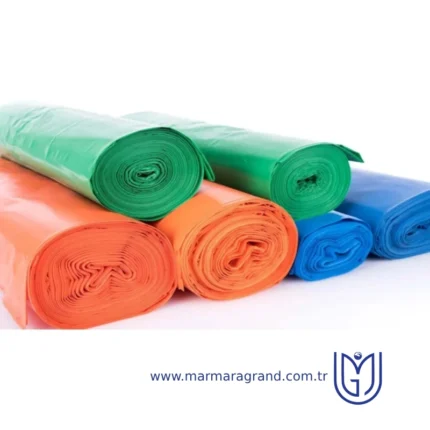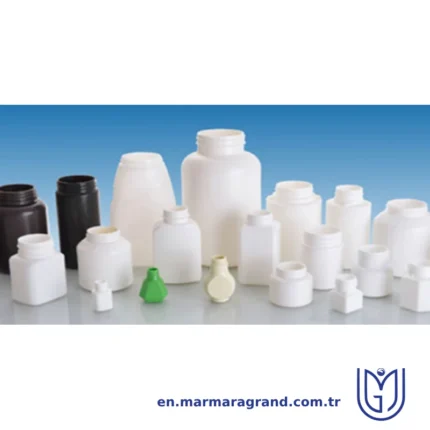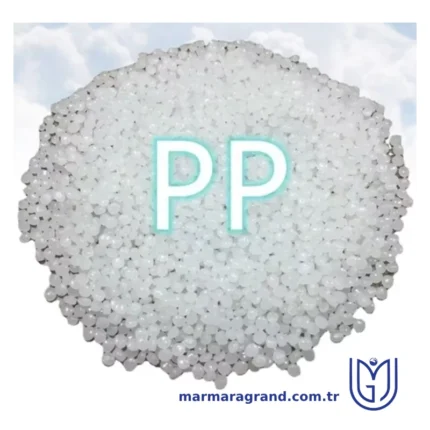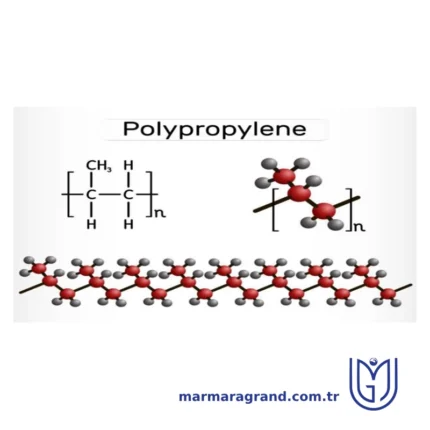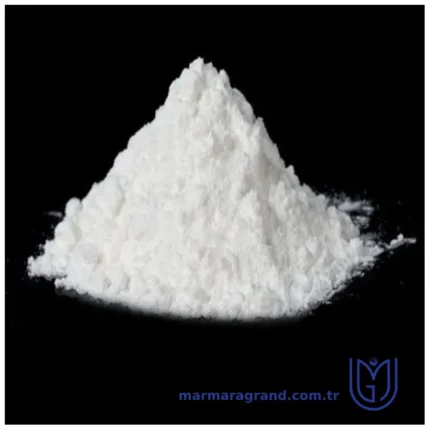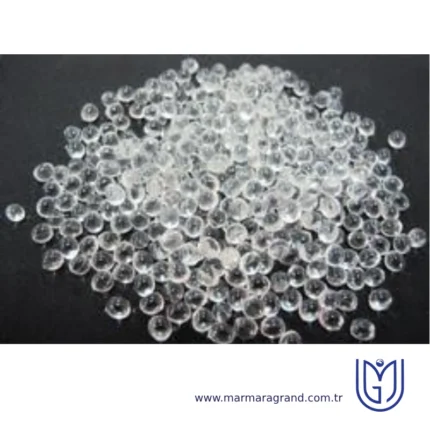Blow Molding
Blow molding is a manufacturing process used to create hollow plastic parts by inflating a heated plastic tube (called a parison or preform) inside a mold cavity until it conforms to the shape of the mold. It is widely used for producing bottles, containers, and other hollow objects.
Types of blow moldingContinuous Extrusion Blow Molding (EBM) Process:
- Molten plastic is continuously extruded in a tube-like form (parison).
- A mold clamps around the parison and inflates it with air.
- The part cools and solidifies before being ejected.
- Reciprocating Screw System: The screw moves back and forth to accumulate plastic before pushing it into the mold.
- Accumulator Head System: Plastic is stored in an accumulator before being discharged in a single shot.
- Plastic is first injection molded into a preform (small tube-like shape with a finished neck).
- The preform is then transferred to a blow mold and inflated.
- The final shape is formed, cooled, and ejected.
- Similar to IBM, but includes a stretching step before inflation to improve strength and clarity.
- The preform is reheated, stretched lengthwise, and then blown into shape.
- A parison is extruded and clamped in a mold.
- The parison is stretched both axially (lengthwise) and radially (outward) before being inflated.
Advantages of blow molding
- Cost-Effective Production
- High Efficiency & Fast Production
- Ability to Produce Complex Shapes
- Lightweight and Durable Products
- Versatile Material Usage
- Suitable for Large & Small Products
Disadvantages of blow molding
- Limited to Hollow Shapes
- High Initial Equipment & Mold Costs
- Inconsistent Wall Thickness
- Weak Seams & Stress Points
- Less Precision Compared to Injection Molding
- High Energy Consumption
Applications of blow molding
- packaging Industry: Bottles for beverages, cosmetics, pharmaceuticals, and household products.
- Automotive Industry: Fuel tanks, air ducts, washer fluid reservoirs, and coolant tanks.
- Industrial & Chemical Storage: Drums, barrels, IBCs, and spray bottles.
- Medical & Pharmaceutical: IV bottles, medicine containers, and diagnostic device housings.
- Consumer Goods: Toys, furniture components, water bottles, and detergent containers.
- Construction Industry: Water tanks, septic tanks, pipes, and conduits.
- Agriculture Industry: Pesticide and fertilizer containers, watering cans, and irrigation components.
Ethylene Vinyl Acetate (EVA)
Ethylene Vinyl Acetate (EVA) is a copolymer composed of ethylene and vinyl acetate (VAC). The properties of EVA vary depending on the ratio of these two components, with vinyl acetate content typically ranging from 1% to 40% by weight.
Structure
Ethylene Vinyl Acetate (EVA) is a copolymer composed of ethylene and vinyl acetate (VAC) monomers, with its structure characterized by randomly distributed vinyl acetate units within a polyethylene-like backbone. The proportion of vinyl acetate in the copolymer significantly influences its properties, with lower vinyl acetate content (typically below 10%) resulting in a more rigid, polyethylene-like material, while higher vinyl acetate content (above 40%) leads to a more rubbery and flexible structure. The presence of vinyl acetate disrupts the crystallinity of polyethylene, enhancing the copolymer’s flexibility, impact resistance, and transparency. EVA exhibits a balance between thermoplastic and elastomeric properties, making it widely used in applications such as adhesives, foams, films, and footwear. Its molecular structure provides excellent toughness, stress-crack resistance, and adhesion to various substrates, making it a versatile polymer in multiple industries.
Properties
Ethylene Vinyl Acetate (EVA) copolymers exhibit a unique combination of properties that vary based on the vinyl acetate (VAC) content. They offer excellent flexibility, elasticity, and toughness, with higher VAC content leading to increased softness, transparency, and impact resistance. EVA has low-temperature resistance, maintaining flexibility even at sub-zero temperatures, and demonstrates good stress-crack resistance. It is also lightweight, has a low density, and provides excellent adhesion to various substrates, making it ideal for adhesives and coatings. Additionally, EVA is resistant to UV radiation and environmental stress, contributing to its durability in outdoor applications. It has good chemical resistance to water, oils, and certain solvents, though it may degrade under high temperatures or prolonged exposure to strong chemicals. The copolymer is also non-toxic, making it suitable for medical and food-contact applications. Its thermal and electrical insulation properties further enhance its versatility in industrial, packaging, and footwear applications.
Applications of Ethylene Vinyl Acetate (EVA) Copolymers:
- Footwear: Used in midsoles, insoles, and outsoles for cushioning and flexibility.
- Adhesives: Hot melt adhesives in packaging, bookbinding, and woodworking.
- Foams: Sports mats, yoga mats, and padding materials.
- Packaging: Film applications for food packaging and medical films.
- Automotive: Interior trims, soundproofing, and under-the-hood components.
- Solar Panels: Encapsulation of photovoltaic cells for durability and insulation.
- Wire & Cable Insulation: Used in electrical applications due to flexibility and insulation properties.
- Toys & Consumer Goods: Soft, flexible materials for safety and durability.
- Flexibility & Softness: Offers rubber-like elasticity and comfort.
- Lightweight: Reduces overall product weight while maintaining durability.
- Good Adhesion: Bonds well with various substrates, making it ideal for adhesives.
- Weather & UV Resistance: Suitable for outdoor applications like solar panels and footwear.
- Chemical Resistance: Resists many chemicals, oils, and solvents.
- Low-Temperature Performance: Maintains flexibility in cold conditions.
- Non-Toxic & Safe: Used in food packaging and medical applications.
- Lower Heat Resistance: Can degrade or deform at high temperatures.
- Lower Mechanical Strength: Compared to other thermoplastics like polyethylene or polypropylene.
- Aging & Degradation: May degrade over time when exposed to UV radiation or harsh conditions.
- Flammability: Not inherently flame-retardant without additives.
- Cost: Can be more expensive than some alternative plastics like PVC.
Expanded PolyStyrene (EPS)
Expanded Polystyrene (EPS) is a rigid, closed cell, thermoplastic foam material produced from solid beads of polystyrene, which is polymerised from styrene monomer and contains an expansion gas (pentane) dissolved within the polystyrene bead. Each solid polystyrene bead contains small amounts of gas which expand when heat (in the form of steam) is applied, thus forming closed cells of EPS. These expanded cells occupy approximately 40 times the volume of the original polystyrene bead, and so with a second heat treatment using a mould, large EPS blocks can be moulded into specific customised shapes.
Structure
The structure of Expanded Polystyrene (EPS) consists of tiny, closed-cell foam beads made of polystyrene. These beads are expanded using heat, causing them to expand up to 50 times their original size. Also each bead contains air pockets.Properties
Expanded polystyrene (EPS) is found to be the most commonly used polymer core. This is because it is lightweight, resistant to moisture and also it has a long life. Studies have concluded that softening of EPS starts when exposed to temperatures ranging from 100°C to 120°C. In the process of flashovers, EPS melted about 160°C and then vaporized, producing poisonous gases at a temperature of 275°C. EPS is an inert, low density hydrocarbon-derived thermoplastic which contains several spherical beads with 2 percent polystyrene and 98 percent airApplications
Building and Construction-EPS is widely used in the building and construction industry due to its insulation properties. It can be used:- As insulated panel systems for facades, walls, roofs and floors in buildings.
- As flotation material in the construction of marinas and pontoons.
- As a lightweight fill in road and railway construction.
- in the packaging of foodstuffs such as seafood, fruit, and vegetables.
- to produce food service containers like drink cups, food trays, and clamshell containers.
Advantages
- lightweight
- water-resistant
- easily manufactured
- Energy Efficient
- high Durability and Longevity
Disadvantages
- vulnerability to compression
- limited fire resistance
- non-biodegradable
Extrusion
The extrusion process is basically designed to continuously convert a soft material into a particular form. The heart of this processing/fabrication machine is a screw conveyer. It carries the cold plastic material (in granular or powdered form) forward by the action of the screw and squeezes it, and, with heat from external heaters and the friction of viscous flow, changes it to a molten stream (refer to Figure 1). As it does this, it develops pressure on the material, which is highest right before the molten plastic enters the die. The screen pack, consisting of a number of fine or coarse mesh gauzes supported on a breaker plate and placed between the screw and the die, filter out dirt and unfused polymer lumps. The pressure on the molten plastic forces it through an adapter and into the die, which dictates the shape of the final extrudate.
Hot extrusionHot extrusion is a hot working process, which means it is done above the material’s recrystallization temperature to keep the material from work hardening and to make it easier to push the material through the die. Most hot extrusions are done on horizontal hydraulic presses that range from 230 to 11,000 metric tons . Pressures range from 30 to 700 MPa , therefore lubrication is required, which can be oil or graphite for lower temperature extrusions, or glass powder for higher temperature extrusions. The biggest disadvantage of this process is its cost for machinery and its upkeep.
Cold extrusionCold Extrusion is a push-through compressive forming process with the starting material (billet/slug) at room temperature. During the process, however, the deforming material undergoes deformation heating (conversion of deformation work to heat) to several hundred degrees. Typically, a punch is used to apply pressure to the billet enclosed, partially or completely, in a stationary die.
Advantages of Extrusion:
- Cost-effective for large-scale production with minimal waste.
- Versatile: Supports various materials and shapes.
- Customizable: Additives and design flexibility.
- Consistent quality and scalable production.
- Energy-efficient and integrates with other processes.
Disadvantages of Extrusion:
- Material limitations: Not all polymers are suitable.
- High setup costs: Equipment and dies are expensive.
- Dimensional variability: Cooling shrinkage and die swell.
- Shape limitations: Intricate designs are challenging.
- Quality control issues: Surface defects and material inconsistencies.
- Post-processing needs: Cutting, finishing, or coating required.
- Environmental concerns: Energy use and plastic waste.
Application of extrusion1.Construction Industry
- Pipes and tubing (e.g., PVC pipes, drainage systems).
- Window and door profiles (e.g., uPVC frames).
- Insulation materials (e.g., foam boards, weather seals).
- Plastic films and sheets (e.g., food packaging, shrink wraps).
- Containers and trays.
- Seals and gaskets.
- Wire and cable insulation.
- Interior trims and protective sheathing.
- Straws, ropes, and garden hoses.
- Plastic profiles for furniture or appliances.
- Wire and cable coatings.
- Conduits for electrical wiring.
- Catheters, tubing, and other medical-grade profiles.
- Conveyor belts and guides.
- Protective linings for machinery.
- Irrigation tubing and films.
- Greenhouse covers.
General Purpose PolyStyrene GPPS
General purpose polystyrene, abbreviated as “GPPS”, is made from the styrene monomer polymer through a suspension process. It is a solid product that is compressed into granules to produce a wide range of products. This material has high clarity and transparency. GPPS is a rigid and transparent thermoplastic polymer that is highly versatile and easy to process. GPPS has excellent electrical insulation properties, is lightweight, and has good dimensional stability. It is commonly used in a wide range of applications such as packaging, household items, and office supplies.
Structure
GPPS is a thermoplastic polymer that is made from styrene monomer. The chemical structure of GPPS consists of a linear chain of styrene monomer units that are joined together by covalent bonds. The properties of GPPS can be modified by copolymerizing it with other monomers such as acrylonitrile, butadiene, Zinc or methyl methacrylate.Properties
GPPS is highly resistant to moisture and has good electrical insulation properties. IT is a brittle material with low-impact strength. It has a tensile strength of 50-60 MPa and a flexural modulus of 2,200-2,500 MPa. GPPS has a glass transition temperature (Tg) of 85-105°C and a melting temperature (Tm) of 200-240°C. It has a heat deflection temperature (HDT) of 70-80°C under a load of 0.45 MPa.Application
General Purpose Polystyrene (GPPS) is a versatile thermoplastic material that finds use in a variety of applications. Here are some of the most common applications of GPPS: Packaging GPPS is a popular choice for packaging materials due to its excellent transparency, rigidity, and moldability. It is commonly used to make food containers, disposable cutlery, and CD cases. GPPS is also used in the production of blister packs, which are commonly used to package pharmaceuticals. Consumer Products GPPS is used in the production of various consumer products due to its excellent electrical insulation properties, lightweight, and dimensional stability. It is commonly used to make toys, cosmetic packaging, and household items such as hangers, trays, and organizers. Building and Construction GPPS is used in the construction industry due to its excellent insulation properties, lightweight, and dimensional stability. It is commonly used to make insulation foam boards, window frames, and light fixtures. GPPS is also used in the automotive industry to make various parts such as instrument panels, door panels, and grilles due to its excellent moldability and dimensional stability.Advantages
- excellent moldability
- good insulator of heat and electricity
- versatile and cost-effective
- clear visibility of the contents inside
- Good dimensional stability
Disadvantages
- low-impact strength
- low thermal stability
- non-biodegradable
High-Impact PolyStyrene (HIPS)
High-impact polystyrene (HIPS) is the rubberreinforced polystyrene plastic which exhibits significantly enhanced impact strength compared to pure polystyrene, while maintaining the main properties of polystyrene such as ductility and reasonable price. It has been widely used in daily equipment. There are two phases in HIPS: polystyrene continuous phase and rubber-dispersed phase. HIPS is usually synthesized by bulk free radical polymerization.
Structure
Structure HIPS consists of long chains of polystyrene in which fine particles of a rubber polymer are distributed. These particles act as a kind of “shock absorber” and prevent cracks from propagating in the polymer.Properties
HIPS has a combination of properties that make it a versatile and widely used material. It is rigid, impact-resistant, lightweight, easy to process, and has a low melting point. HIPS is also resistant to chemicals, oils, and grease. HIPS has a tensile strength of 24.8 MPa (3,600 psi) and tensile modulus of 1.8 GPa (261 ksi) according to ASTM standards, this plastic is capable of withstanding enough force to make it a suitable choice for the packaging industry, and many other products as well.Applications
From the grocery store to the packaging plant to the factory floor, this versatile plastic is a staple across all sorts of sectors. Some examples are:- Knives, forks, and spoons in the food grade industry use HIPS Plastic.
- Elongated profiles found on display stands are created from HIPS Plastic.
- Containers and trays in the packaging industry
- HIPS plastic makes lightweight tubing and profiles common to household goods
- High Impact Polystyrene creates molded parts used to assemble toys
Adavantages
- more environmentally friendly than other plastics
- High Impact Resistance
- Highly Malleable
- Ability to Paint
- Affordable Price
Disadvantages
- HIPS is vulnerable to degradation by many chemicals, including solvents, acids, and alkalis.
- HIPS has a low-temperature resistanceand can become brittle at low temperatures.
- HIPS has limited resistance to UV lightand can become yellow and brittle over time when exposed to UV light.
- HIPS has poor flame resistanceand will ignite and burn easily.
Linear Low Density Polyethylene (LLDPE)
LLDPE stands for Linear Low-Density Polyethylene. It is a type of polyethylene (a polymer made from ethylene monomers) that has short, linear branches in its molecular structure. This structure gives LLDPE unique properties compared to LDPE (Low-Density Polyethylene) and HDPE (High-Density Polyethylene).
StructureLLDPE has a unique linear molecular structure with short, controlled branches. This structure is different from LDPE (Low-Density Polyethylene), which has long and irregular branches. LLDPE consists of ethylene monomers (–CH₂–CH₂–) linked in a linear fashion. It has short, uniform side branches created by copolymerizing ethylene with α-olefins (like butene, hexene, or octene).These branches prevent the polymer chains from packing too tightly, giving LLDPE low density and flexibility.
PropertiesLLDPE (Linear Low-Density Polyethylene) is a versatile thermoplastic polymer known for its excellent flexibility, high impact resistance, and good tensile strength. it is slightly denser than LDPE but less rigid than HDPE, making it ideal for applications requiring toughness and stretchability. It has a high elongation at break (>500%), allowing it to withstand significant stretching without tearing. LLDPE exhibits excellent chemical resistance against acids, bases, and alcohols while maintaining low water absorption, making it suitable for moisture-sensitive applications. Thermally, it has a melting point of approximately 110–125°C and remains functional between -50°C and 60°C. Though it lacks inherent UV resistance, stabilizers can be added to improve durability under sunlight. Its ease of processing through extrusion, blow molding, and film manufacturing makes it widely used in plastic films, flexible tubing, cable insulation, and various molded products. While LLDPE is non-biodegradable, it is recyclable, contributing to sustainable material management.
Applications of Linear Low-Density Polyethylene (LLDPE)
- Packaging Industry:
- Stretch films and shrink wraps
- Plastic bags (grocery, trash, and industrial)
- Food packaging films (cling wraps, pouches)
- Agricultural Sector:
- Greenhouse films and mulch films
- Drip irrigation tubing and water storage tanks
- Industrial Applications:
- Pipes and fittings (flexible and durable)
- Cable insulation and protective coatings
- Industrial liners (chemical and water-resistant)
- Automotive Industry:
- Fuel tanks and hoses
- Interior soft components and protective covers
- Consumer & Household Products:
- Toys, containers, and household items
- Soft-touch grips and molded parts
- Medical & Pharmaceutical:
- Medical tubing and IV bags
- Sterile packaging films
Advantages of LLDPE
- Higher Flexibility and Toughness:
- More impact-resistant than LDPE
- Maintains durability even at low temperatures
- Excellent Chemical and Moisture Resistance:
- Resistant to acids, bases, and solvents
- Waterproof and corrosion-resistant
- Good Processability
- Lightweight and Cost-Effective
- Better Puncture and Tear Resistance:
- Ideal for thin film applications like stretch wraps
Disadvantages of LLDPE
- Lower Heat Resistance:
- Softens and deforms at high temperatures
- Not suitable for high-temperature applications
- Poor UV Stability:
- Requires UV stabilizers for outdoor use, or it degrades over time
- Lower Stiffness Compared to HDPE:
- Less rigid, making it unsuitable for structural applications
- Limited Gas Barrier Properties:
- Not ideal for gas-tight packaging applications
- Difficult to Process in Some Applications:
- Requires higher processing temperatures compared to LDPE
Low Density PolyEthylene Injection (LDPE)
LDPE injection molding grade
LDPE injection molding grade is a specialized type of Low-Density Polyethylene designed for molding applications that require flexibility, impact resistance, and ease of processing.
StructureThe structure of LDPE injection molding grade is characterized by a highly branched, amorphous polymer configuration, which distinguishes it from other forms of polyethylene such as High-Density Polyethylene (HDPE). The polymer chains in LDPE are irregularly branched, meaning the chains do not pack closely together, resulting in a low degree of crystallinity. The polymerization of LDPE occurs through free-radical polymerization, typically under high pressure, which causes the long chains of the polymer to have side branches. For the injection molding grade, the polymer structure is tailored to achieve a higher melt flow index (MFI), which facilitates the material’s smooth flow and filling into injection molds.
PropertiesLDPE injection molding grade is a versatile polymer characterized by its high degree of branching and amorphous structure, which results in excellent flexibility. This material ensures smooth and efficient flow during the injection molding process. This makes it suitable for producing intricate parts with good surface finish. LDPE injection molding grade exhibits moderate tensile strength (around 8-12 MPa) and excellent elongation at break, providing resistance to cracking and impact. The material is also known for its good chemical resistance, particularly against acids, bases, and alcohols, while being less resistant to hydrocarbons. Additionally, it offers low moisture absorption and performs well under low temperatures, maintaining its flexibility. LDPE is easy to process and heat sealable. Despite its high impact resistance and toughness, it has a relatively low stiffness compared to higher-density polyethylene grades.
Applications
- Consumer Products:
- Household containers, lids, and dispensers
- Toys and other recreational items
- Furniture parts and lightweight molded components
- Packaging Industry:
- Caps, closures, and flexible lids
- Cosmetic and personal care packaging
- Food storage containers (FDA-approved grades)
- Medical & Pharmaceutical:
- Syringes, laboratory equipment, and sterile packaging
- Medical device housings and disposable instruments
- Industrial & Electrical:
- Cable coatings and wire insulation
- Protective covers and soft-touch components
- Pipes and low-pressure fittings
- Automotive Industry:
- Interior trims, protective covers, and soft components
- Fluid storage containers and under-the-hood parts
- Construction & Agriculture:
- Waterproofing membranes, gaskets, and sealants
- Molded irrigation components
Advantages
- Excellent Processability
- High Flexibility & Impact Resistance
- Lightweight Material
- Good Chemical & Moisture Resistance
- Food-Safe and Non-Toxic
- Cost-Effective
Disadvantages
- Low Mechanical Strength
- Limited Heat Resistance
- Poor UV Resistance
- Not Biodegradable
- Weak Barrier Properties
PolyPropylene (PP Chemical)
Polypropylene (PP) is one of the most widely used thermoplastic polymers, known for its high strength, chemical resistance, and versatility. It is used in industries ranging from packaging and textiles to automotive and medical applications.
Structure of Polypropylene (PP)Polypropylene (PP) is a semi-crystalline thermoplastic polymer derived from propene (C₃H₆) monomers through the polymerization process.
- Molecular Structure:
- Composed of repeating propylene units (C₃H₆) linked together in a chain-like structure.
- Exists in three main forms:
- Isotactic PP – Most commonly used, with all methyl groups (CH₃) aligned on one side of the polymer chain, resulting in high crystallinity and strength.
- Syndiotactic PP – Alternating arrangement of methyl groups, making it more flexible but less crystalline.
- Atactic PP – Random arrangement of methyl groups, leading to an amorphous structure with low strength.
- Polymerization Process:
- Polypropylene is synthesized using Ziegler-Natta catalysts or metallocene catalysts in industrial polymerization reactions.
- It is classified as a thermoplastic, meaning it can be melted and reshaped multiple times without significant degradation.
Properties of Polypropylene (PP)Polypropylene possesses a combination of mechanical, thermal, and chemical properties, making it ideal for diverse applications.
1. Mechanical Properties:
✔ High Tensile Strength – Strong yet lightweight, making it ideal for packaging and textiles. ✔ Impact Resistance – Can withstand moderate shocks and impacts. ✔ Good Elasticity & Flexibility – Suitable for films, fibers, and flexible containers.2. Thermal Properties:
✔ High Melting Point (~160°C – 170°C) – More heat-resistant than polyethylene (PE). ✔ Low Thermal Conductivity – Acts as an insulating material. ✔ Resistant to Temperature Fluctuations – Can handle both hot and cold environments.3. Chemical Properties:
✔ Resistant to Acids, Alkalis, and Solvents – Does not degrade easily when exposed to chemicals. ✔ Low Water Absorption – Maintains mechanical properties in humid environments. ✔ Good Fatigue Resistance – Ideal for repeated bending applications like hinges.4. Electrical Properties:
✔ Excellent Electrical Insulation – Used in wires, cables, and electrical components.5. Environmental Properties:
✔ Recyclable (#5 plastic code) – Can be reused in eco-friendly applications. ✔ UV Sensitivity – Can degrade when exposed to prolonged UV radiation unless treated with stabilizers.Applications of Polypropylene (PP)
- Packaging Industry
- Textile Industry
- Automotive Industry
- Medical & Healthcare Applications
- Household & Consumer Products
- Industrial Applications
Advantages of Polypropylene (PP)✔ Lightweight & Strong – Provides durability without adding extra weight. ✔ Excellent Chemical Resistance – Withstands exposure to acids, bases, and solvents. ✔ High Heat Resistance – Can be used in microwaves and hot water applications. ✔ Waterproof & Moisture-Resistant – Ideal for food packaging and textiles. ✔ Recyclable & Eco-Friendly – Can be reused, reducing plastic waste. ✔ Affordable & Cost-Effective – Inexpensive compared to other polymers. ✔ Non-Toxic & Safe – Used in medical and food-grade applications.
Disadvantages of Polypropylene (PP)✘ UV Degradation – Can become brittle when exposed to sunlight for long periods unless UV stabilizers are added. ✘ Low Impact Resistance at Low Temperatures – Can crack in extremely cold conditions. ✘ Flammability – Easily combustible and requires flame retardants for certain applications. ✘ Difficult to Paint or Glue – Requires special surface treatments for adhesion. ✘ Limited Transparency – Unlike PET, PP is not completely clear. ✘ Environmental Concerns – Though recyclable, it is not biodegradable, leading to plastic waste issues.
Suspension
Polyvinyl Chloride (PVC) Suspension Grade is one of the most widely used thermoplastic polymers, produced through the suspension polymerization process. This method results in free-flowing, fine particles that can be processed into various products. Suspension PVC (S-PVC) is known for its versatility, chemical resistance, durability, and cost-effectiveness, making it a popular choice in multiple industries.
StructurePolyvinyl Chloride (PVC) suspension grade is a thermoplastic polymer produced through the suspension polymerization process. In this method, vinyl chloride monomer (VCM) is dispersed in water with the help of suspending agents and polymerized using free radical initiators. The resulting PVC resin consists of fine, porous, and free-flowing particles with a relatively high molecular weight, making it suitable for a wide range of applications. The polymer structure is primarily composed of repeating vinyl chloride units (–CH₂–CHCl–), forming a linear polymer chain with varying degrees of polymerization. PVC suspension grade is widely used in the manufacturing of pipes, fittings, films, sheets, and rigid as well as flexible products due to its excellent mechanical strength, durability, and chemical resistance. The properties of the resin, such as particle size, porosity, and bulk density, can be adjusted by controlling the polymerization conditions, making it versatile for different industrial applications.
PropertiesPVC suspension grade exhibits a combination of excellent physical, mechanical, and chemical properties, making it highly versatile for industrial applications. It appears as a white, free-flowing powder with a bulk density ranging from 0.45 to 0.65 g/cm³ and a particle size typically between 50-250 microns. Its high porosity allows for better plasticizer absorption, making it suitable for both rigid and flexible products. Mechanically, it offers good tensile strength, typically between 40-60 MPa, and moderate to high impact resistance, which can be enhanced with additives. Chemically, PVC suspension grade is highly resistant to acids, bases, and many chemicals, ensuring durability in harsh environments. It also has low water absorption, which provides excellent dimensional stability. However, it is susceptible to UV degradation, requiring stabilizers for outdoor applications. These properties make PVC suspension grade ideal for manufacturing pipes, profiles, films, and various other rigid and flexible products.
Applications
- Construction Industry: Pipes, fittings, window profiles, doors, roofing sheets
- Packaging Industry: Films, sheets, bottles
- Automotive Industry: Interior trims, dashboards, wire insulation
- Medical Sector: Tubing, blood bags, IV containers
- Electrical Applications: Cable insulation, coatings
Advantages
- High durability and strength – Ideal for long-term use
- Excellent chemical resistance – Withstands acids, bases, and oils
- Cost-effective – Affordable compared to other polymers
- Low water absorption – Ensures dimensional stability
- Easily processable – Can be molded, extruded, and shaped easily
- Customizable – Properties can be modified with additives
Disadvantages
- UV degradation – Becomes brittle under prolonged sunlight exposure
- Toxic gas release – Emits harmful gases (HCl) when burned
- Health concerns – Some plasticizers used in flexible PVC may have risks
- Not biodegradable – Raises environmental concerns regarding disposal
Thermoplastic PolyOlefins (TPO)
Thermoplastic Polyolefins (TPO) are a class of polyolefin-based thermoplastic elastomers that combine the properties of polypropylene (PP), polyethylene (PE), and elastomers. They are widely used in various industries due to their durability, flexibility, chemical resistance, and ease of processing.
StructureThermoplastic polyolefins (TPOs) have a heterogeneous polymer structure, consisting of a semi-crystalline polypropylene (PP) matrix blended with amorphous elastomeric domains, typically ethylene-propylene-diene monomer (EPDM) or ethylene-propylene rubber (EPR). The PP component provides rigidity, thermal stability, and strength, while the elastomeric phase contributes flexibility, impact resistance, and toughness. Unlike copolymers, TPOs maintain a phase-separated microstructure, where the rubber particles are dispersed within the PP matrix rather than chemically bonded. This structure allows TPOs to remain thermoplastic, meaning they can be melted and reprocessed without undergoing permanent chemical cross-linking. Additionally, the presence of optional fillers such as talc, glass fibers, or carbon black can modify properties like stiffness and durability. The balance between the crystalline regions of PP and the amorphous elastomer phase gives TPOs their unique combination of strength, flexibility, and recyclability, making them ideal for applications in automotive parts, roofing membranes, and flexible packaging materials.
PropertiesThermoplastic Polyolefins (TPOs) possess a unique combination of mechanical, thermal, chemical, and electrical properties that make them highly versatile in various applications. Mechanically, they offer high impact resistance, good flexibility, and moderate stiffness, thanks to the combination of a semi-crystalline polypropylene (PP) matrix and elastomeric components such as ethylene-propylene rubber (EPR) or EPDM. They also exhibit excellent tear and abrasion resistance, making them durable in demanding environments. Thermally, TPOs can withstand temperatures up to 120–140°C, with a relatively low melting point (~165°C for the PP phase), allowing for easy processing via injection molding, extrusion, and thermoforming. Chemically, they are highly resistant to oils, greases, solvents, acids, and bases, and with proper stabilization, they offer good UV and weather resistance, making them suitable for outdoor applications such as automotive exteriors and roofing membranes. Additionally, TPOs have low water absorption, ensuring dimensional stability in humid conditions. Electrically, they function as good insulators, making them useful in select wire and cable applications. Their thermoplastic nature allows for melting and reshaping, making them highly recyclable and environmentally friendly compared to traditional thermoset rubbers. Moreover, TPOs are lightweight, contributing to fuel efficiency in automotive applications and reducing material costs. These combined properties make TPOs ideal for automotive bumpers, flexible packaging, consumer goods, and construction materials.
Applications of Thermoplastic PolyOlefins
- Automotive Industry:
- Bumpers and fascias
- Interior trim panels and dashboard components
- Weather seals and underbody shields
- Lightweight structural parts for fuel efficiency
- Roofing & Construction:
- TPO roofing membranes (waterproof and UV-resistant)
- Flexible building materials and siding
- Window and door seals
- Consumer Goods:
- Sporting equipment (e.g., soft-touch grips, protective gear)
- Medical components (due to chemical resistance)
- Household items like storage bins and furniture components
- Packaging Industry:
- Rigid and flexible food containers
- Industrial packaging solutions
- Electrical & Electronics:
- Wire and cable insulation
- Protective casings for devices
Advantages of Thermoplastic PolyOlefinsHigh Impact Resistance – Absorbs shocks and mechanical stress effectively Flexible Yet Durable – Balances elasticity with structural integrity Excellent Weather & UV Resistance – Ideal for outdoor applications Good Chemical & Water Resistance – Resists oils, solvents, and moisture Lightweight – Reduces material costs and improves fuel efficiency in vehicles Easy to Process & Mold – Can be injection molded, extruded, or thermoformed Thermoplastic & Recyclable – Can be reprocessed, making it an eco-friendly choice Cost-Effective – Lower production costs compared to thermoset rubbers
Disadvantages of Thermoplastic PolyOlefinsLower Heat Resistance – Limited to around 120–140°C, making it unsuitable for high-heat applications Lower Stiffness Compared to Some Plastics – May require reinforcement (e.g., glass fibers) for structural strength Surface Finish Limitations – May require coatings or treatments for improved aesthetics Difficult to Bond with Adhesives – Requires specialized bonding techniques due to low surface energy Can Become Brittle in Extreme Cold – Some formulations may lose flexibility at very low temperatures


